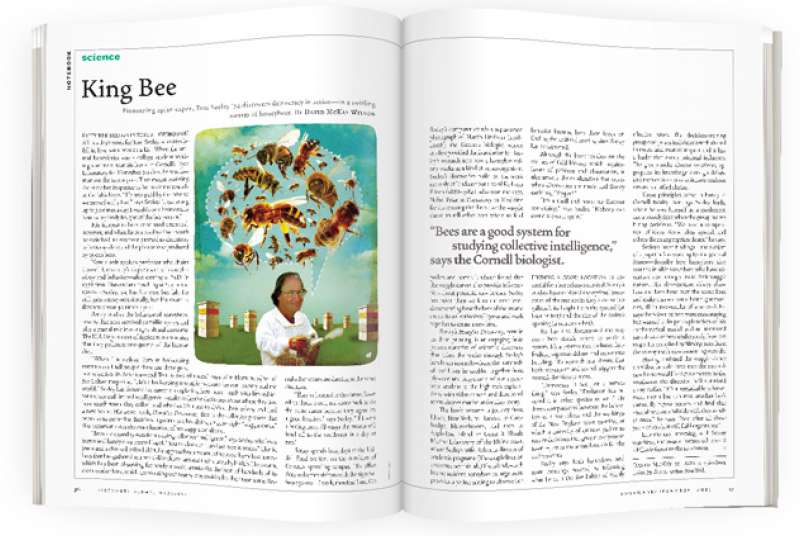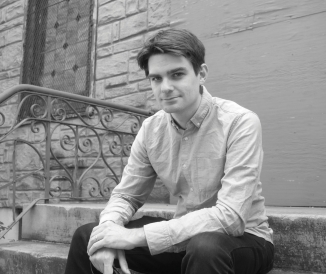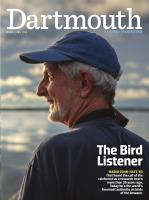
King Bee
Fifty bee stings in just a few hours? All in a day’s work for Tom Seeley, who says he fell in love with bees as a kid. When the animal behaviorist was a college student working summers near his home at Cornell’s Dyce Laboratory for Honeybee Studies, he was low man on the totem pole. That meant assisting the state bee inspector as he made the rounds at the lab’s hives. “He was paid by the hive so we moved really fast,” says Seeley. “I got stung up to 50 times a day. I would come home really beat as my body fought off the bee venom.”
His interest in bees continued unabated, however, and when he returned to Dartmouth he switched majors from premed to chemistry to better understand the pheromone produced by queen bees.
Now a soft-spoken professor who chairs Cornell University’s department of neurobiology and behavior—after earning a Ph.D. in 1978 from Harvard and teaching at Yale in the 1980s—Seeley, 59, has his own bee lab. He still gets stung occasionally, but his count is down to about 40 times a year.
Seeley studies the behavior of honeybees, insects that have survived 30 million years and play a crucial role in our agricultural economy. The U.S. Department of Agriculture estimates that they pollinate one-quarter of the human diet.
“When I introduce Tom at beekeeping conferences I tell people there are three great bee scientists in America—and Tom is two of them,” says Kim Flottum, editor of Bee Culture magazine. “He’s a beekeeping scientific treasure for our country and the world.” Seeley has focused his career on exploring how bees—each with limited information and limited intelligence—make collective decisions about where they live, how much water they collect and whether it’s time to divide their colony and find a new home. His 2010 book, Honeybee Democracy, details the collective process that bees use to make that decision. It points to a bee doing a figure-eight “waggle dance” that communicates the exact location of her suggested abode.
“Bees are a good system for studying collective intelligence,” says Seeley, who loves butter and honey on a toasted bagel. “You can look at it and see how it works.” Clad in jeans and a checked oxford shirt, he approaches a swarm of 10,000 homeless honeybees that has gathered in a beard-like cluster around their queen by his lab. The swarm, which he’s been observing for nearly a week, awaits the decision of hundreds of its older worker bees, which are scouting out nearby tree cavities for their new home. Several other scouts are dancing in the same direction.
“They’ve listened to the dance, flown off to check it out, and come back to do the same dance because they agree it’s a good location,” says Seeley. “If I were a betting man, I’d wager the swarm will head off to the southwest in a day or two.”
Seeley spends long days at the Liddell Field Station, on the outskirts of Cornell’s sprawling campus. His office door welcomes visitors with the sign: Laboro ergo sum—I work, therefore I am. On Seeley’s computer stands a sepia-toned photograph of Martin Lindauer (1918-2008), the German biologist whose studies provided the foundation for Seeley’s research into how a honeybee colony works as a kind of super-organism. Seeley’s discoveries build on the work not only of Lindauer but also of Karl von Frisch (1886-1982), who won the 1973 Nobel Prize in Physiology or Medicine for discovering that bees use the waggle dance to tell other bees where to find pollen and nectar. Lindauer found that the waggle dances also provide information about potential new homes. Seeley has taken their work to the next level, documenting how the bees of the swarm create its collective intelligence and work together to create a new hive.
Seeley’s Honeybee Democracy, now in its third printing, is an engaging first-person narrative of scientific discovery that takes the reader through Seeley’s hands-on research—from the hundreds of test hives he cobbled together from plywood and ring-shank nails as a graduate student to the high-tech explorations with video camera and directional microphones that he undertakes today.
The book recounts a journey from Ithaca, New York, to Hanover to Cambridge, Massachusetts, and then to Appledore Island at Cornell’s Shoals Marine Laboratory off the Maine coast, where Seeley’s wife, Robin, is director of academic programs. (The couple lives on 100 acres near his lab.) The island, which has no resident honeybees or large trees, provides a perfect setting to observe bee behavior because bees there focus on finding the artificial nesting sites Seeley has constructed.
Although the book touches on the tedium of field biology, which requires hours of patience and observation, it also unveils the exhilaration that arises when discoveries are made and Seeley exclaims, “Yippee!”
“It’s a thrill and honor to discover something,” says Seeley. “Nobody can ever discover it again.”
Finding a good location is essential for a bee colony’s survival. Seeley’s studies have explored the optimal properties of the tree cavity they inhabit (10 gallons), its height from the ground (at least 15 feet) and the size of the cavity’s opening (2 square inches).
He has also documented the way scout bees decide where to settle a swarm. It’s a process that includes fact-finding, vigorous debate and consensus building. His research has shown that both movement and sound triggers the swarm’s decision to move.
“Democracy is not just a human thing,” says Seeley. “Evolution has favored it in other species as well.” He draws comparisons between the behaviors of a bee colony and the workings of the New England town meeting, at which a minority of citizens gather to render decisions that govern everyone in town—just as the scout bees do for the entire swarm.
Seeley says both honeybees and town meetings succeed by following what he calls the five habits of highly effective hives. The decision-making group comprises individuals with shared interests and mutual respect and it has a leader that exerts minimal influence. The group seeks diverse solutions, aggregates its knowledge through debate and then decides once opinions coalesce around a unified choice.
These principles come in handy at Cornell faculty meetings Seeley leads, where he sees himself as a moderator, not a proselytizer, when the group makes hiring decisions. “We have a competition of ideas. Some ideas spread, and others die an appropriate death,” he says.
Seeley’s latest findings—the subject of a paper he’s reworking for the journal Science—describe how honeybees also work to inhibit scout bees who have advertised competing sites in their waggle dances. His slow-motion videos show how the bees head-butt the scout bees and make a sound with their flight muscles, all in two-tenths of a second. He says the Science editors were encouraging but wanted a deeper explanation of his mathematical model and an increased sample size of bees under study, from 20 to 40. He complied by filming bees from the colony that’s now swarming outside.
Having analyzed the waggle dance on video, he calculates that the swarm’s new home would be 2,700 meters to the southwest, the direction he’d surmised a day earlier. “It’s a remarkable achievement that a bee can read another bee’s dance, fly 2,700 meters and find that special tree, on a hillside with thousands of trees,” he says. “And after all these years of study, it still flabbergasts me.”
Late the next morning, with Seeley watching, the swarm buzzes off toward a hillside forest to the southwest.
David McKay Wilson is a freelance writer. He lives in upstate New York.










